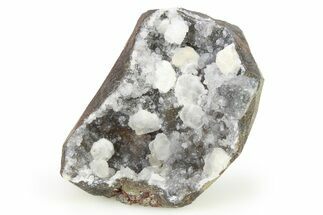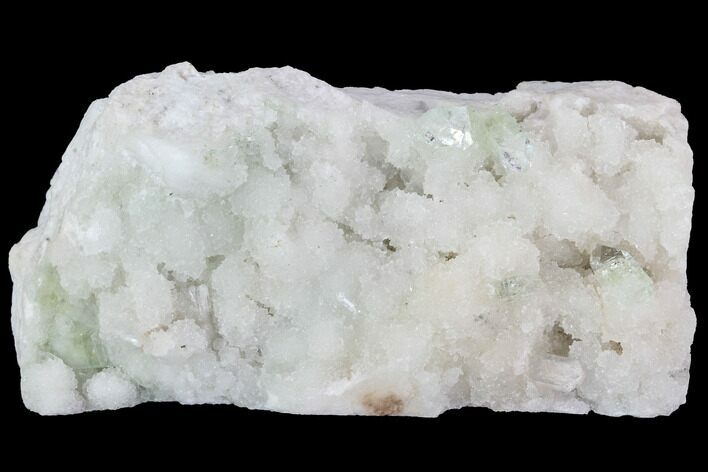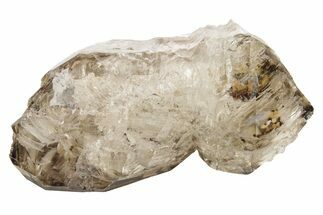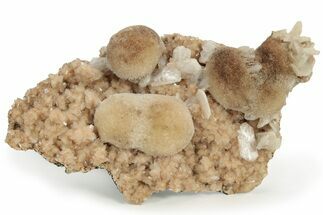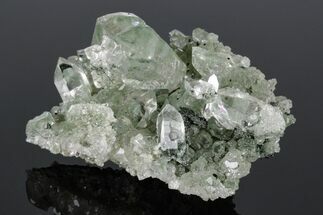This Specimen has been sold.
3.8" Apophyllite & Druzy Quartz Association - India
This is a nice specimen that contains green apophyllite crystals on a matrix of chalcedony and druzy quartz. This specimen was collected from India and the base has been cut flat to allow for aesthetic presentation.
Apophyllite while not a zeolite itself is almost always found associated with zeolites in the same pockets. It has two crystal habits, a rectangular prism capped by a steep four sided pyramid or a pseudo-cubic structure. While not a well known mineral to the general public it is popular among mineral collectors due to it's pastel colors and beautiful crystal formations.
Apophyllite while not a zeolite itself is almost always found associated with zeolites in the same pockets. It has two crystal habits, a rectangular prism capped by a steep four sided pyramid or a pseudo-cubic structure. While not a well known mineral to the general public it is popular among mineral collectors due to it's pastel colors and beautiful crystal formations.
About Quartz
Quartz is the name given to silicon dioxide (SiO2) and is the second most abundant mineral in the Earth's crust. Quartz crystals generally grow in silica-rich environments--usually igneous rocks or hydrothermal environments like geothermal waters--at temperatures between 100°C and 450°C, and usually under very high pressure. In either case, crystals will precipitate as temperatures cool, just as ice gradually forms when water freezes. Quartz veins are formed when open fissures are filled with hot water during the closing stages of mountain formation: these veins can be hundreds of millions of years old.
Quartz is the name given to silicon dioxide (SiO2) and is the second most abundant mineral in the Earth's crust. Quartz crystals generally grow in silica-rich environments--usually igneous rocks or hydrothermal environments like geothermal waters--at temperatures between 100°C and 450°C, and usually under very high pressure. In either case, crystals will precipitate as temperatures cool, just as ice gradually forms when water freezes. Quartz veins are formed when open fissures are filled with hot water during the closing stages of mountain formation: these veins can be hundreds of millions of years old.
 Reviews
Reviews

